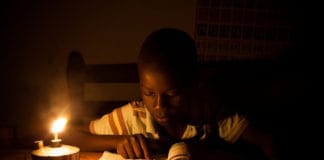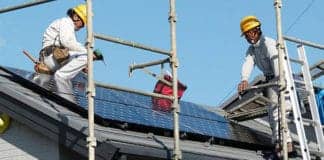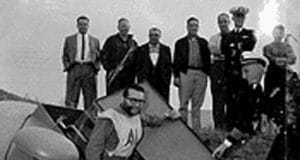Tags Chernobyl
Tag: Chernobyl
Nuclear power in Africa?
Rosatom – Russia’s state nuclear energy corporation – has recently signed Memorandums of Understanding (MOUs) with a number of African nations to build nuclear power plants within their borders. I spoke to David Himbara, a professor of international development and African energy activist, about the likelihood of Rosatom actually building these nuclear plants. Currently, Sub-Saharan Africa faces an extraordinary level of energy poverty.
Four years after Fukushima, Japan is solar-powered
In the week before the March 11, 2011, earthquake at Fukushima, one person, Prime Minister Naoto Kan, did an extraordinary act that set Japan’s energy course in history for the next 100 years. He was able to convince the Japanese Parliament to pass a solar payment policy. This one policy shift is now making Japan one of the leading solar powered nations on earth – far ahead of California or the U.S. Number one in solar generation in 2014 was Germany.
Less than one lifetime: Eyewitness to nuclear development, from Hunters Point...
While sorting through papers, correspondence, news clippings, records etc., I realized that nuclear bomb and nuclear power development has occurred within my lifetime. It was July 16, 1945, when Trinity, the first atomic bomb, was detonated at Alamogordo nuclear site in New Mexico, followed by the uranium bomb dropped on Hiroshima and the hydrogen bomb on Nagasaki in August.
How the Navy made Treasure Island a radiation dump, then promised...
Generations of Treasure Island residents are living with radiation from the Navy ships exposed to the atomic bomb tests at Bikini in the South Pacific, which were brought to San Francisco to see if they could be cleaned. Though the Navy has the data, it never conducted longitudinal studies of adults and children it impacted with radioactivity. Help the people of Treasure Island win justice at the RAB meeting Tuesday, Aug. 19, 7-9 p.m., Casa de la Vista, 191 Avenue of the Palms, Treasure Island.
A global threat: Fukushima fallout damaged the thyroids of California babies
A new study of the effects of tiny quantities of radioactive fallout from Fukushima on the health of babies born in California shows a significant excess of hypothyroidism caused by the radioactive contamination travelling 5,000 miles across the Pacific. The Fukushima catastrophe has been dismissed as a potential cause of health effects even in Japan, let alone as far away as California. And on what basis? Because the “dose” is too low.
50 reasons we should fear the worst from Fukushima
Fukushima’s missing melted cores and radioactive gushers continue to fester in secret. Japan’s harsh dictatorial censorship has been matched by a global corporate media blackout aimed – successfully – at keeping Fukushima out of the public eye. But that doesn’t keep the actual radiation out of our ecosystem, our markets … or our bodies. Speculation on the ultimate impact ranges from the utterly harmless to the intensely apocalyptic.
Fukushima two years later: Basic guide
March 11 will make the second anniversary of the triple catastrophes that occurred in Japan: the earthquake, the tsunami and the nuclear meltdowns at Fukushima. Over the last two years people are asking whether the Fukushima nuclear disaster is worse than what occurred in 1986 in Chernobyl.
Showdown at San Onofre
Two stricken California reactors may soon redefine a global movement aimed at eradicating nuclear power. They sit in a seismic zone vulnerable to tsunamis. Faulty steam generators have forced them shut for nearly a year. Tell CPUC ‘No nukes!’ Shut down San Onofre permanently! Tuesday, Jan. 8, hearing 10 a.m., rally noon, 505 Van Ness Ave. at McAllister, San Francisco.
Fukushima and the nuclear pushers
The conclusion of a recent report of a Japanese parliamentary panel that the Fukushima Daiichi nuclear power plant disaster was rooted in government-industry “collusion” and thus was “man-made” is mirrored throughout the world. “Regulatory capture” is the pattern among nuclear agencies right up to the International Atomic Energy Agency.
The dangerous myths of Fukushima: Exposing the ‘no harm’ mantra
The myth that Fukushima radiation levels were too low to harm humans persists a year after the meltdown. Views like these are political, not scientific, virtually identical to what the nuclear industry cheerleaders claim. An October 2011 article in the journal Nature estimated Fukushima emissions to be more than double that of Chernobyl. How anyone, let alone scientists, could call Fukushima doses “too low” to cause harm in the face of this evidence is astounding.
Fukushima – worse than Chernobyl
The good news is that 11 months after the Fukushima meltdown, thousands of Japanese marched in the streets to protest the continuing operation of nuclear power plants in their country, and urged a shift to renewable energy. Meanwhile in the U.S. the Nuclear Regulatory Commission (NRC) approved the building of two new nuclear power plants in Georgia.
Medical journal article: 14,000 U.S. deaths tied to Fukushima reactor disaster...
An estimated 14,000 excess deaths in the United States are linked to the radioactive fallout from the disaster at the Fukushima nuclear reactors in Japan, according to a major new article in the December 2011 edition of the International Journal of Health Services by Joseph Mangano and Dr. Janette Sherman.
Blood clots found in the legs of Fukushima evacuees
Earthquake evacuees living in temporary housing and shelters in the hard-hit city of Ishinomaki have developed deep thrombophlebitis, the swelling of a vein caused by a blood clot. Diseases of the blood and circulatory and lymphatic systems are among the most widespread consequences of the Chernobyl contamination, especially among evacuees.
Virginia earthquake shakes U.S. awake to nuclear power danger
The North Anna Nuclear Power plant reactors are located about 10 miles from the epicenter of the 5.8 earthquake that shook Virginia on August 23. The plant is built to sustain a 6.2 magnitude earthquake, but this does little to comfort those who live close by.
Question marks, the elephant in the room and the refusal of...
Given the detection of “hot particles” in Japan and as far away as Seattle, there is reason for concern. When ingested or inhaled, “hot particles” give intense radiation to local tissue areas. We acknowledge that many factors can cause infant deaths, but the critics who ignore Japanese fallout as possible contributing factors are acting irresponsibly.
Is the increase in baby deaths in the northwest U.S. due...
U.S. babies are dying at an increased rate. While the United States spends billions on medical care, as of 2006, the U.S. ranked 28th in the world in infant mortality, more than twice that of the lowest ranked countries. The recent CDC Morbidity and Mortality Weekly Report indicates that in eight cities in the northwest U.S., infant mortality increased 35 percent in the 10 weeks after the Fukushima Nuclear Power Plant disaster.
Chernobyl: Consequences of the catastrophe 25 years later
Nuclear fallout knows no state or national boundaries and will contribute to increase in illnesses, decrease in intelligence and in instability throughout the world. No country can maintain itself if its citizens are economically, intellectually, politically and socially impoverished. Given the continuing and known problems caused by the Chernobyl catastrophe, we must ask ourselves: Before we commit ourselves to economic and technological support of nuclear energy, who, what and where are we willing to sacrifice and for how long?
Is the Fukushima nuclear plant breakdown worse than Chernobyl?
While thousands of miles and 25 years separate the sites and the events that led to the catastrophes at Fukushima and Chernobyl, the effects will be very similar – and will remain so for years to decades to centuries.

 Store
Store







